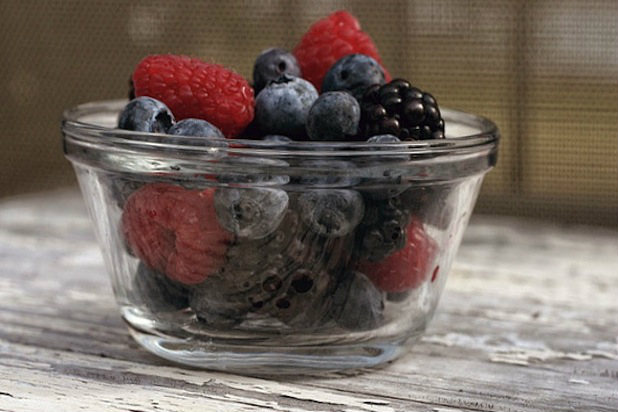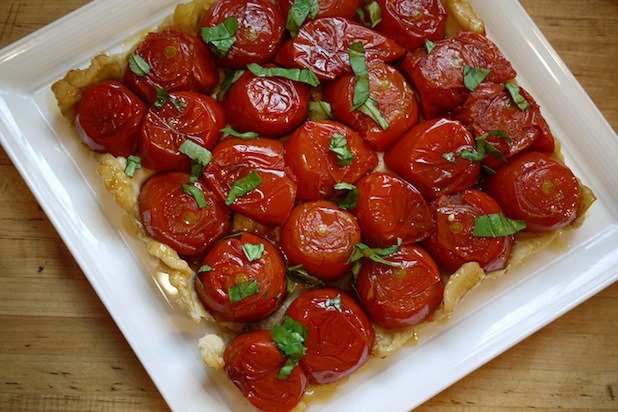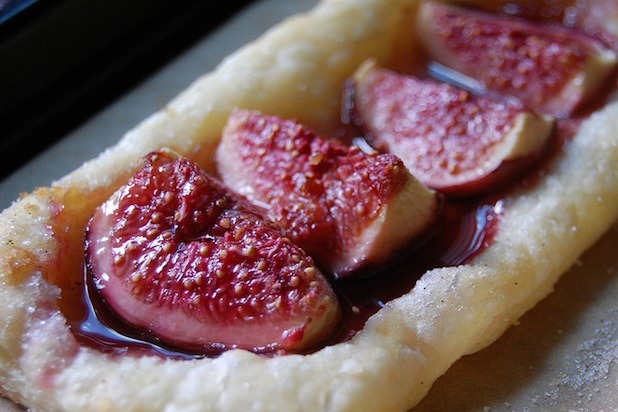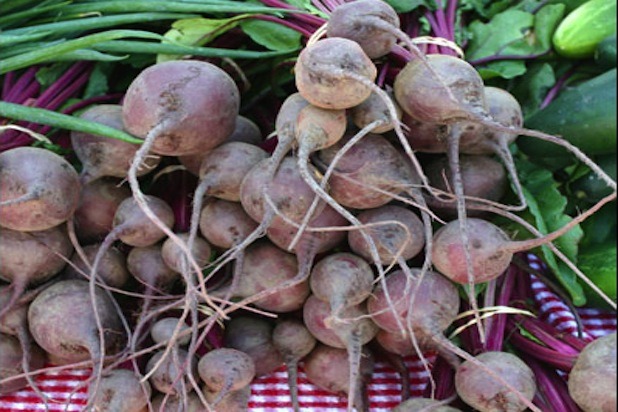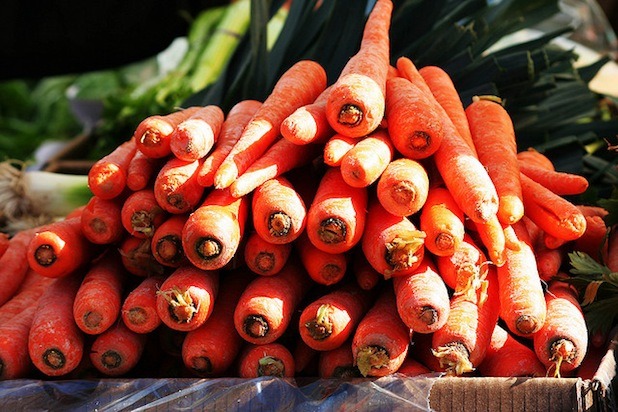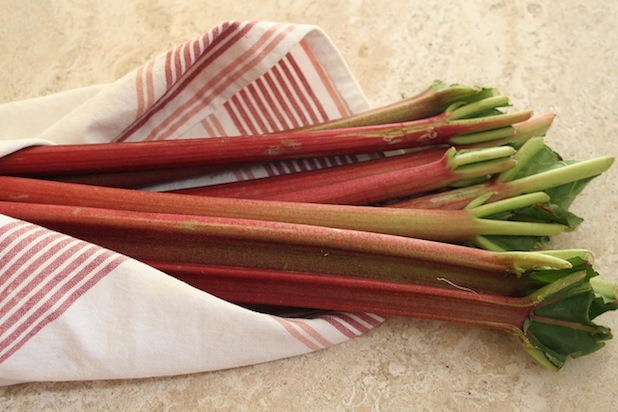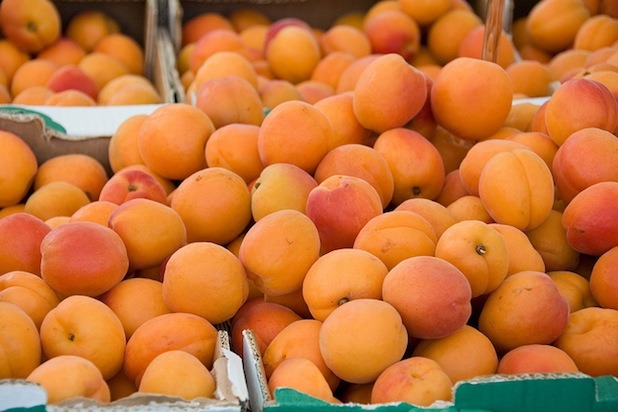7 Summer Foods To Freeze Now (Slideshow)
The key to storing berries is to freeze them when they're at their peak ripeness to ensure that they maintain the most flavor and nutrition content. When working with blackberries, strawberries, raspberries, and cherries, start by washing the berries gently in cold water. Next, drain the berries, letting them sit in a colander for up to 10 minutes to remove as much water as possible. Once dry, seal the berries in an airtight container and freeze them at zero degrees Fahrenheit.
When working with blueberries, however, skip the washing step. Researchers from Clemson University warn that washing blueberries before freezing them results in an undesirable, tougher-skinned berry. Instead, the researchers suggest washing the berries right before using them in a recipe.
To incorporate summer berries into your fall palate, try this Cherry Almond Clafoutis Recipe at your next dinner party.
Tomatoes
Homemade pasta sauces, soups, and salsas that use fresh tomatoes almost always taste better than those that rely on canned tomatoes purchased in the middle of winter. When freezing fresh tomatoes for future use, make sure to pick tomatoes that are firm, well shaped, and richly colored, indicating the perfect level of ripeness. Next, bring one gallon of water to a boil in a large pot and cut a shallow "X" on the bottom of each tomato. Working in one pound batches, immerse the tomatoes in boiling water for 30 to 60 seconds, or until the tomato skins split open at the "X" seam.
Finally, transfer the tomatoes to a large bowl of ice water, and peel the tomato skins off with your hands or a knife once they've cooled. When stored in freezer containers or sealed freeze-guard bags, tomatoes will keep in a freezer set to zero degrees Fahrenheit for up to ten months, which is more than enough time to get you through until the next tomato season.
Note: While most tomato varieties will freeze well, plum and Roma tomatoes contain the most pulp and will therefore produce the best results upon thawing.
Impress your fall and winter holiday guests with this Bold & Spicy Tomato Sauce using your freezer-stored fresh tomatoes.
Figs
Experts advise freezing figs within 12 hours of picking them to preserve their true flavor and texture. Freezing figs in an unheated syrup mixture of 3 cups of sugar, 4 cups of water, and 1 teaspoon of store-bought citric acid will preserve the figs color and sweet flavor.
To prepare the figs, wash them, remove their stems and any soft spots, and slice them into ¼-inch pieces. Pack the sliced figs into a container or vacuum freezer bag, leaving room to add ½ cup of sugar syrup and a few inches for the figs to expand. Place the containers as quickly as possible into the coldest part of your freezer to promote rapid freezing.
This Roasted Figs with Blue Cheese Recipe makes for a great fall hors d'oeuvre.
Beets
As a root vegetable, beets remain in season well into October, but are arguably at their best in the late summer, early fall months. In order to freeze beets, first you need to trim, wash, cook, and cut them. Select dark, uniformly red and tender beets for freezing, trim the ends, and wash them in cold water using your hands or a vegetable brush.
Cook the beets in a pot with enough boiling water to cover them and cook them until tender, which could take anywhere from 25 to 50 minutes, depending on the size of the beet.
Once tender, drain the beets, discard the liquid, and let the beets cool enough to remove their skins and cut them into ¼-inch thick slices. Package them in in a sealed freezer bag or a vacuum food saver bag and freeze them at zero degrees Fahrenheit for up to a year.
Roasted Balsamic Beets make a great alternative for roasted potatoes as a side dish and can add a spark of color to your dinner table spread.
Carrots
Freezing carrots is similar to freezing beets — after washing and slicing your fresh carrots into ¼-inch thick slices, submerge the carrot slices in a pot of boiling water. While the carrots are cooking, for approximately two minutes, prepare an ice bath. The process of boiling the carrots is called blanching, and ensures that the carrots won't lose their flavor, color, and texture in storage.
After blanching the carrots, immediately immerse them in the ice bath to prevent overcooking, and then drain them thoroughly. After this step, the hard work is over —simply bag your carrot slices and they're freezer-ready.
While carrots are generally available year round in certain locations, late summer is considered the peak of their season. Therefore, buying carrots in bulk and freezing them for later use can preserve the carrots' best flavor while saving you money and a trip to the market before your next big dinner event.
Next time you need a fix of beta-carotene, try making this Braised Carrots and Fennel Recipe.
Rhubarb
Why should holiday pies be limited to apples, pumpkins, and pecans? Rhubarb is easy to freeze and can hold its flavor well throughout the winter. As with carrots and beets, wash, and cut the rhubarb into ½-inch thick slices, peeling off the tough outer skin as you go.
If you're only planning to store the rhubarb for three or four months, you can pack them dry in a freezer bag and store them away at zero degrees Fahrenheit For longer storage times, however, you should pack the rhubarb slices in a solution of sugar, honey, or fruit juice, such as peach or apple juice. Experts recommend dry packing if you plan to eventually use the rhubarb in a pie.
Surprising your guests with a rhubarb pie or cobbler will have them reminiscing about the summers past while reaching for seconds.
Apricots
Apricots are notorious for their brief season, so be sure to buy and store these lush fruits in bulk while you can. After picking the ripest of the bunch, wash, pit, and cut the apricots, either into halves or slices, depending on your preferences.
Next, coat the apricots with a solution made of ½ teaspoon of ascorbic acid for every 6 teaspoons of cold water — this prevents the apricots from darkening. Then, add ½ cup of sugar to each quart of fruit, stirring until the sugar dissolves. Place the coated fruit into airtight containers or heavy-duty freezer bags, and store them for up to 12 months at zero degrees Fahrenheit.
Take your fall dessert spread to the next level by baking this Apricot Almond Tart, which mixes the sweet flavors of summer with a nutty taste of fall.
